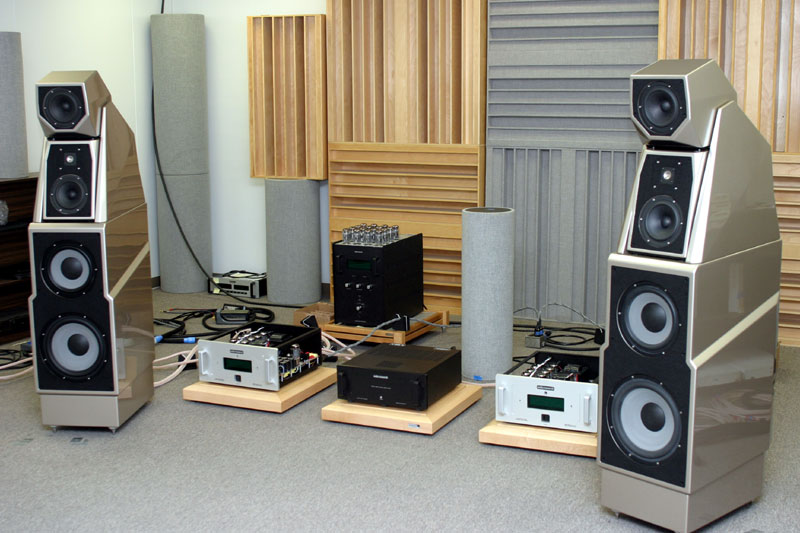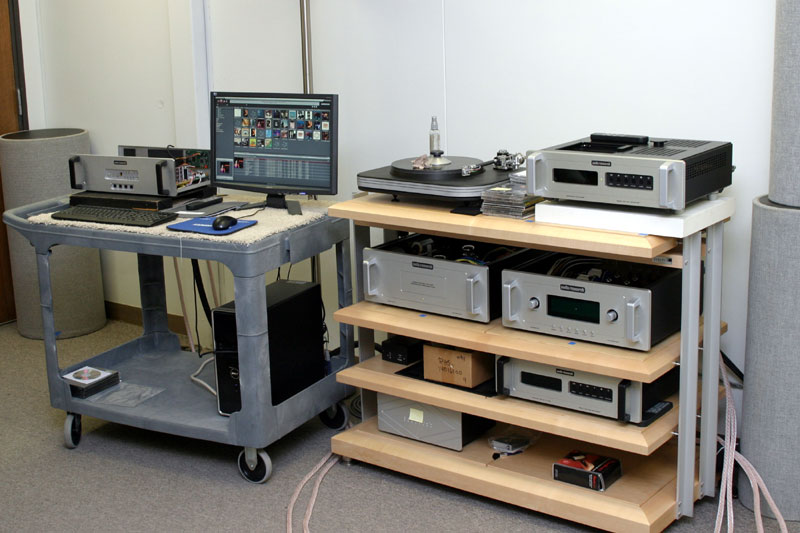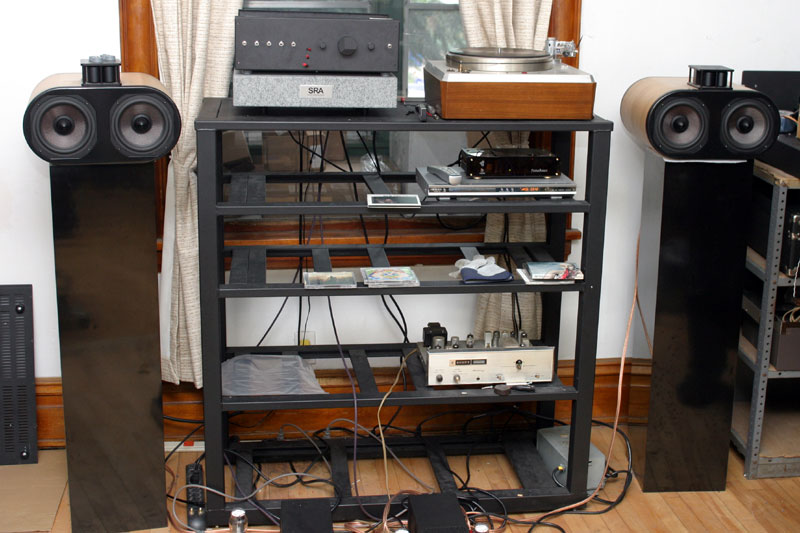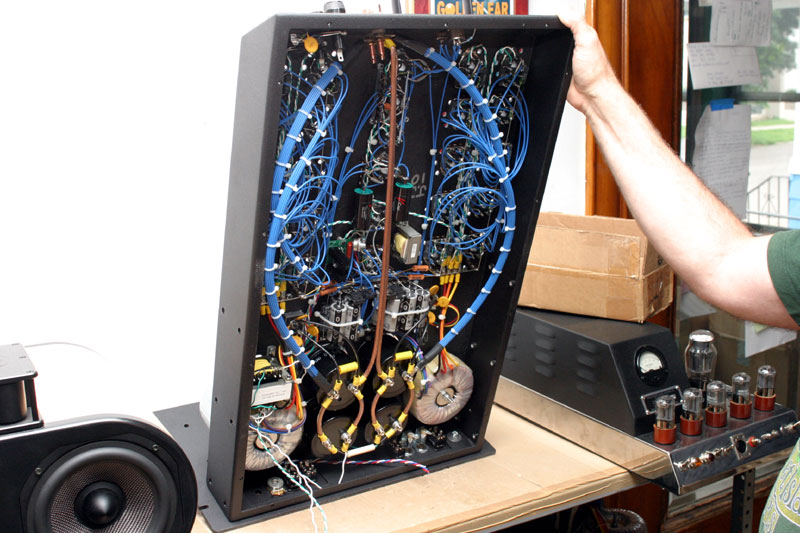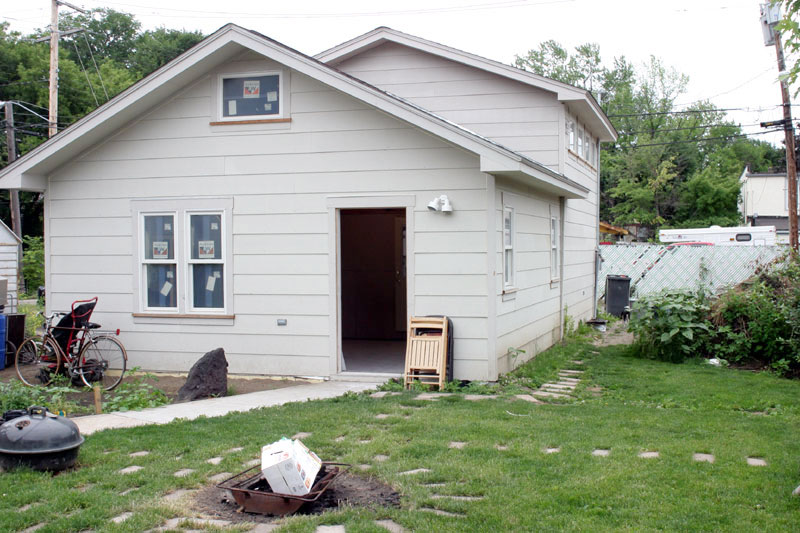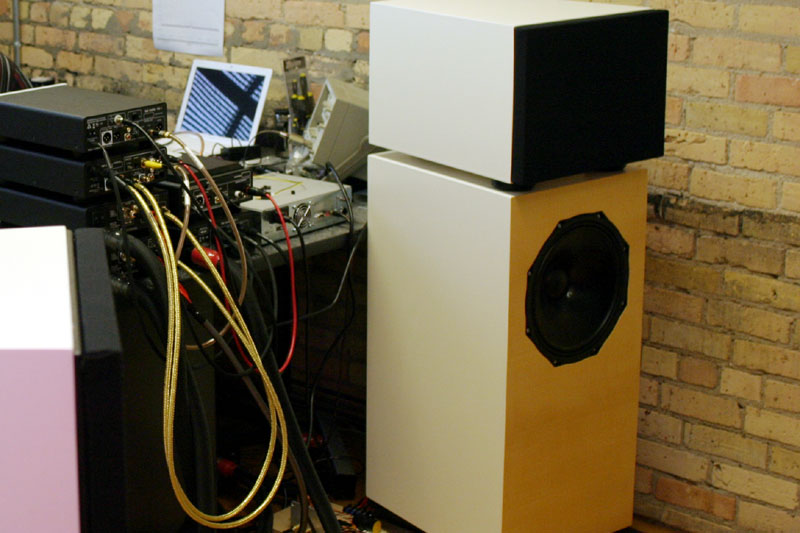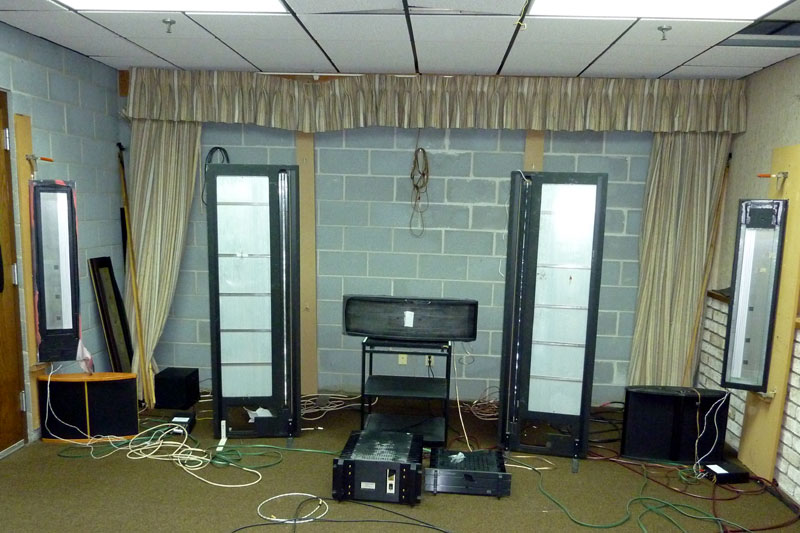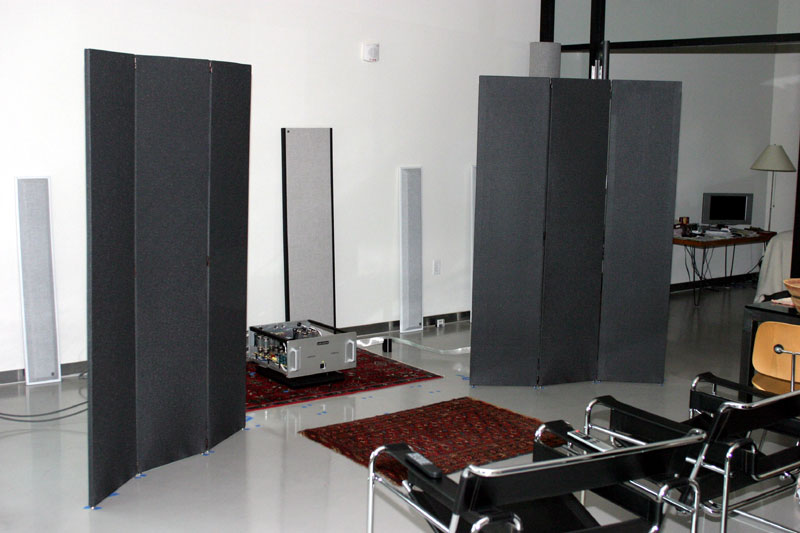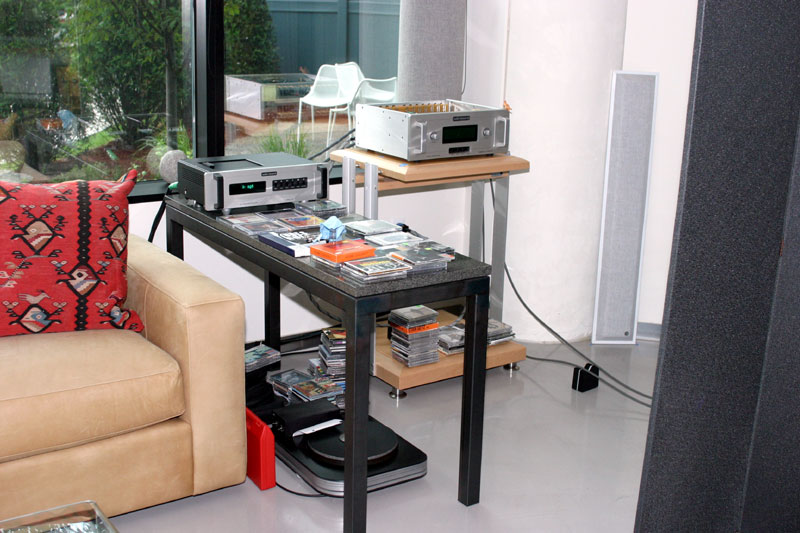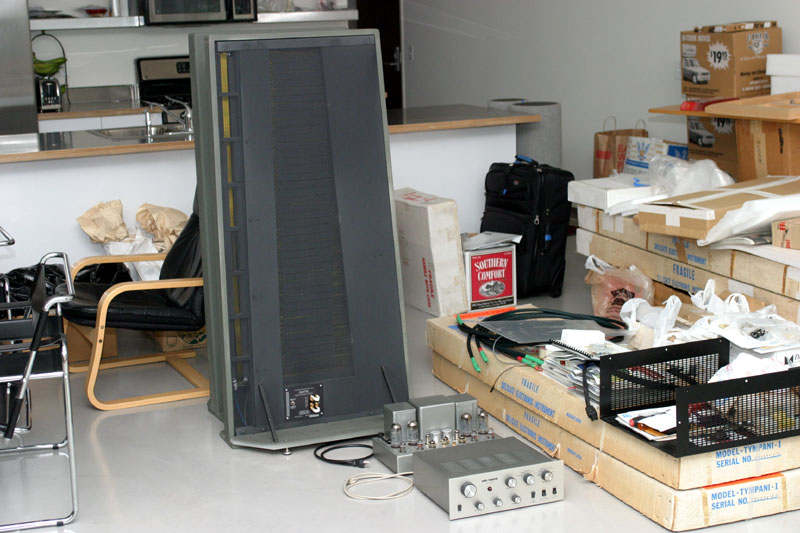TAB's Summer Audio Roadtrip
f any one place can lay legitimate claim to being high-end audio's home office, where the industry's goals are best served, it would be the Twin Cities. No fewer than five important audio manufacturers are located there, and they run the gamut in terms of the products they make: source to speakers, analog to digital. And it's not just the sheer number of manufacturers located in the Minneapolis/St. Paul area that make the region so central; it's the collective vision they share: that music is important and reproducing it exceedingly well enhances our lives. This was reemphasized to me while I drove around the Twin Cities with fellow TAB editor-at-large and area native Paul Bolin. We visited the companies headquartered there and heard some great music on a diverse group of audio systems. Our first stop was Audio Research, the granddaddy of Minnesota audio companies. This has become an almost yearly ritual. Each summer for the past few, I've braved the Midwest's humidity and propensity for out-of-nowhere thunderstorms to do some listening in Audio Research's big demo room. This time there was assembled a system replete with just the component I wanted to hear: the new Reference Anniversary preamp ($24,995). If you missed our news story on this beast, I'll just tell you that Audio Research is renowned for its preamps, and the Reference Anniversary is the most ambitious one the company has ever made. Also new and in use was the soon-to-be-released DAC8 ($4995), which was connected to a Dell PC. The amps were Reference 210 monoblocks ($19,990 per pair). The speakers were ones with which I was very familiar -- Wilson Audio MAXX 3s ($68,000 per pair) -- and the same was true of the interconnects and speaker cables from Shunyata Research's Aeros series.
This system displayed solidity and vividness from the highest highs to the lowest lows. There was also great dynamic coherence -- the sense that the music scaled up and down in volume both realistically and smoothly. I asked Dave Gordon and Terry Dorn of Audio Research to assess the contribution of the Reference Anniversary. Who would know this better than they? "The music pours right through you," they offered. "You don't have to work at hearing it." They also pointed out that each channel of the Reference Anniversary has as much power-supply energy storage as an entire Reference 5. In case you're wondering, Audio Research has over 90 of the new preamps, which will be available for only one year, on order, and the number grows a bit every day.
Our next stop, the next morning, was Atma-Sphere. Located in St. Paul, the smaller of the Twin Cities, Ralph Karsten's company is a true cottage industry: it's located in a cottage on a quiet residential street. For years Ralph conducted all Atma-Sphere business out of his own house, and when he began looking for nearby commercial space for his company, he discovered that the prices were unreasonable. So he bought a second house instead and relocated Atma-Sphere there. It's a nice space, with a manufacturing area, a kitchen for the workers and an office on the second floor. There's also a garden in the backyard, completing the homey image.
The system here wasn't set up for critical listening. It's used for testing, and it gives the guys building Atma-Sphere amps and preamps access to music while they work. The High Emotion Audio Bella Twin speakers were particularly interesting because of their Leading Edge Transducer tweeter. Instead of the entire diaphragm moving in and out, the tweeter's voice coil vibrates at one edge, causing the waveform to propagate through the diaphragm's special plastic flim. An Atma-Sphere MP-3 Mk 3.1 preamp ($5450) and MA-1 Mk 3.1 amps ($16,200 per pair) were also in use, along with an Oppo DVD player feeding a modified Paradise DAC from Hong Kong for digital playback. An Atma-Sphere 208 turntable ($3900), which is a carefully rebuilt Empire 208, was also part of this utilitarian system. "We use it to listen to the equipment for buzz, to burn in the amps and preamps and such," Ralph chimed in. But, "It has amazed me because of how much it reveals."
It's easy to admire the intricate workmanship of an Atma-Sphere MA-2 Mk 3.1 amp ($37,500 per pair). Within a few miles of Atma-Sphere is the home of Tri-Planar tonearms. Tri Mai, who bought the company from founder Herb Papier more than a decade ago, is an artist by training and an analog diehard by inclination. He was thus the perfect person to carry on the Tri-Planar philosophy and name. In fact, the reputation of this intricate gimbaled tonearm has grown since he began building it.
The future home of Tri-Planar. For the next few months, Tri-Planar's well-organized manufacturing area will continue to be located in Tri Mai's basement. But new digs -- a separate building out back -- are nearing completion. Tri Mai's audio system is surrounded by stunning stained-glass windows he designed and created, increasing the peacefulness and solemnity of the listening space. He played a Pink Floyd bootleg through his big Classic Audio Reproductions speakers -- on vinyl, of course -- and while the recording was far from state of the art, I monitored our conversation with one ear and listened to the music with the other.
Tri's Atma-Sphere preamp and amps were units he built -- he worked for Ralph Karsten before taking charge of Tri-Planar. On his Kuzma Reference turntable was mounted a Tri-Planar Mk VII U2 tonearm ($4950) and Dynavector XV-1s cartridge, a combination of 'arm and cartridge that I also use.
In contrast to the suburban peace of Atma-Sphere and Tri-Planar, Bel Canto Design is located in busy downtown Minneapolis, not far from the Metrodome. It shares space in an older brick building that's been renovated, the manufacturing space and offices being open and uncluttered.
Company president John Stronczer designed and built the speakers set up in his office. They are similar in philosophy to the speakers at his gorgeous home, which I've visited a few times: TAD TD-2404 studio monitors. The office speakers use a TAD TD-2001 high-frequency driver from 850Hz to 25kHz and a PHL 12" woofer from 850Hz on down. The speaker's top section is a high-frequency horn made by Peavey, a constant-directivity design perfect for the TAD driver. The speaker's sensitivity is 94dB and its maximum output is 115dB. "Just the kind of speaker that I like," John offered. "We have no plans to make and sell them at this point. I just built them for our use in evaluating our equipment." On his desk, John had two stacks of his equipment, including the new FM1 tuner (top, $1495), which has a digital output in addition to the standard analog jacks, so you can run it directly into a DAC. The space is tight here, but "you would be surprised how good the system sounds," John says. "The speakers are very revealing of the equipment in front of them while being a lot of fun to listen to."
Barring bad traffic, it's about a 40-minute drive from downtown Minneapolis to the northeast suburb of White Bear Lake, where Magnepan is located, just enough time to wonder what intriguing wrinkle Wendell Diller of Magnepan will work into the impending demo. Whether at the Magnepan factory or CES, Wendell just can't help but use your eyes against your ears. He says he likes to "overcome biases," whereas I think he has some of Lucy's mischievousness in him, pulling the football away and sending Charlie Brown -- or unwitting reviewers -- tumbling to utter embarrassment. So as Paul Bolin and I walked into Magnepan's darkened listening room, Wendell's flashlight pointing the way to where we could sit, I knew that the large panels we could just make out were fool's gold. But when the music started to play, I thought that maybe, just maybe, Wendell had decided to go straight and give up his life of audio deception. I was sure the speakers we were hearing had a true ribbon tweeter -- the high frequencies were that extended and resolute. But as Wendell played more cuts, doubt started to creep into my mind. The soundstage seemed too wide to be created by those two panels. Musicians were placed with great specificity beyond the speakers' boundaries -- what we could see of them in the nearly pitch dark, that is. When the lights came on, I had my answer. This was another of Wendell's tricks, and a very effective one. He called the system "three-channel stereo," and it used a pair of wall-mounted MMC2 speakers along with a new center-channel speaker whose design Magnepan is finishing. There was also a pair of DW1 standalone planar-magnetic woofers to augment the bottom end. The new center-channel speaker does not have one of Magnepan's true ribbon tweeters, but it does have a quasi-ribbon supertweeter, so I'll give myself half a point for recognizing that there was something special about the treble.
Wendell explained, "The easiest way to do this three-channel stereo is setting the surround processor to five-channel stereo and turning off the hokey, derived surround channels. The center is simply left plus right. If the system is strictly for music, three-channel stereo can be accomplished passively, which is what I did for this demo." The goals of this system are both sonic and aesthetic, and they're defined by a question Wendell sent to me after our visit: "Is it possible to give an interior designer and an audiophile exactly what they want with no serious compromises on the part of either party?" Or more specifically, is it possible to combine an existing home-theater system with one specific to high-end audio? I can't answer these questions, but I can say that this was an impressive demo in sonic terms. The final Twin Cities system I heard also used Magnepan speakers to cast an extremely wide soundfield, but it was anything but interior-designer friendly. Warren Gehl does product testing for Audio Research. When you receive a preamp or amp, you can be assured that it sounds like it should because Warren signed off on it before it was shipped. I had been hearing about his home system for over a year, both from Warren, who enjoys talking about great sound as well as listening to it, and Paul Bolin, who had experienced it a few weeks before my visit.
Warren's condo is located on the ground floor of a gleaming renovated office building. His walls are mostly thick tinted glass. You can see out, but people can't see in. If they could, they would likely think his Magnepan Tympani I-U speakers are huge room dividers. Each speaker comprises three hinged panels that are nearly the size of a Magnepan MG1.7. Thus, the speakers are wide and thin, so they both do and do not take up a lot of space. The Tympani I-U is a two-way speaker system, with one tweeter panel and two woofer panels per channel crossed over at 1200Hz. It is only high-impedance Tympani ever made. It had very light voice-coil wires -- heavier wires were used in the lower-impedance models that followed -- and true first-order crossovers. Warren's speakers were manufactured in 1972 and owned by a former Audio Research employee, who sold them to Warren a few years ago. They have been completely refurbished at Magnepan, including the replacement of all diaphragms and tweeters. Key passive parts have been replaced as well, and the grille cloth has been stretched over the panels to nearly the ripping point in order to minimize its effect on the sound. The Tympani I-Us are a largely unvarying load, "7 to 8 ohms across the entire frequency range," according to Warren. They do need power because they are not very sensitive.
As expected, Warren used Audio Research electronics: a Reference 110 amp ($9995), a Reference 5 preamp ($11,995) and a CD5 CD player ($5995). His Immedia turntable wasn't connected, but given the bags of recently purchased LPs I spied (and surreptitiously looked through), it looks like that will change soon. Interconnects and power cords were from Sain Line Systems, another Minneapolis maker, and speaker cables were Nordost Valhalla. Warren's system possessed a number of special qualities, including expert treble-to-midrange integration, fast transients that lacked any sort of harmonic smearing, and nimble bass that was very well delineated to its depths somewhere in the 30Hz range. However, it was the way the system worked with the room that was most significant. Because of all that glass and the polished-concrete floors, Warren's room is abundant with hard, reflective surfaces, and this made me more than a little wary before I sat down to listen. Yet, Warren has positioned the speakers within the room and used a tasteful amount of treatment to create a listening space that isn't excited by the output of the big Magnepan speakers. It's a lively space and an enveloping sound. "I like a stereo that I can swim into," Warren proclaimed, and he has certainly created that, along with one that's abundant with (for lack of a better term) sprightly exuberance.
ll of the audio systems we heard in Minneapolis,
St. Paul and outskirts were impressive in their own ways, and a couple were world class.
What they all helped to prove is that while the Twin Cities area is surely a hotbed of
audio manufacturing, when everything is just right, the center of the audio universe is
wherever you happen to be sitting and listening. |

